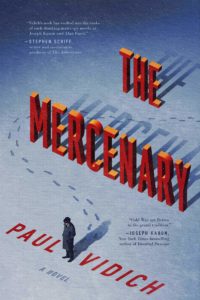Imposters play a role in many contemporary novels, including Stephen King’s The Outsider, Bret Easton Ellis’s Glamorama, Colson Whitehead’s The Nickel Boys, Donna Tartt’s The Secret History, and others.
Imposters are part of our literary tradition, appearing as con men in crime fiction, as double agents in spy fiction, and in a variety of other guises in literary fiction. The imposter takes on another person’s identity, or makes up a false identity, and the usual motive is to gain the trust of others in order to exploit it. Deception can be an artful way to seduce, steal, enable the double agent to betray, and for some there is the allure of slipping into another life simply because it is more interesting.
Shakespeare used gender masking in several of his plays, particularly Twelfth Night (where Viola plays Cesario and is loved by both men and women) and the Merchant of Venice (where Portia portrays a learned lawyer). Anthony Hope’s The Prisoner of Zenda tells the story of an English gentleman on holiday who stands in for the grievously ill King of Ruritania at his coronation. E.T. Hoffman’s The Devil’s Elixir explores the psychological dimensions of a murderer whose crimes are attributed to his double.
Our fascination with fictional imposters, I believe, comes from an urge to give up the life we are born into and become a different person—someone smarter, wealthier, better looking, more famous, or not constrained by social and ethical mores. It is a common human trait to admire the lives of others and wish to become those people. Imagine going into Goodwill, taking off a tired suit, and pointing to the rack of clothing worn by others, and saying, “I’ll take that life.” Fictional imposters give us the chance to vicariously exchange a dull, ordinary life for a more exciting and dramatic one.
The imposter trope makes for great fiction with its array of impersonators, decoys, poseurs, doppelgängers, and identify thieves. Here are 5 classic works whose memorable imposters still entertain and appall us.
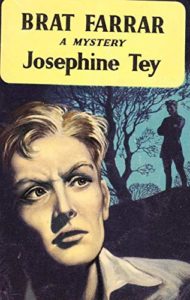
Brat Farrar, Josephine Tey (1949)
Money is at the heart of Brat Farrar, Tey’s account of the Ashby’s, an English country-squire family whose estate sits in the fictional village of Clare, near the south coast of England. Patrick Ashby’s mysterious disappearance, and presumed suicide, sets up the younger son, Simon, to inherit the estate when he turns 21. The title character, Brat Farrar, has returned from America when he encounters Alec, a second-rate actor and Ashby family friend, who proposes a swindle. Alec suggests that Brat impersonate the missing son, and as the elder brother, claim the estate.
After much coaching, Brat presents himself to the Ashby family lawyer making his claim, saying he’d run away and changed his name. He gives an account of Patrick’s missing years. The skeptical lawyer seeks to verify the claim, but Bratt’s likeness to the missing son, his command of family detail, and the lack of contrary evidence, convince everyone except the younger son Simon, who it turns out had murdered his older brother. He can’t reveal the crime without implicating himself and so plots to murder his “brother” a second time. Tey, like other prominent mid-century British crime writers, draws readers in with ingenious puzzles, but her characterizations make Brat Farrar a worthy literary work.

Confessions of Felix Krull, Confidence Man, Thomas Mann (1955)
Mann’s protagonist, Felix Krull, is not a traditional con man. He doesn’t lie or deceive, but he makes his victims complicit in their undoing by exploiting their vulnerabilities. The novel is boastfully narrated by an older Krull, looking back at his life. As the novel opens, the handsome young Krull is down on his luck after his bankrupt father commits suicide, forcing Krull to take a job as a hotel elevator operator. He allows himself to be seduced by an unhappily married hotel guest, who then encourages Krull to steal her jewels, explaining that her husband is rich and will buy her more. Women young and old fall before his polished manners and Greek grace.
He begins to lead two lives. Servile hotel elevator operator by day, and at night a gallant who attends theater and dines in fine restaurants. He is fascinated by interchangeability. He muses that with a change of clothes and make-up, he can become a hotel guest who sits in a plush arm chair, smoking cigarettes. To improve his social standing, Krull befriends the Marquis de Venosta. Venosta is hopelessly attracted to a Parisian woman rejected by his parents, who arrange to send him away from Paris on a world tour. The Marquis suggests Krull become his double and that they switch lives. The self-confident Krull plays cool to the idea at first, but he allows himself to be convinced. The only effective lie, Krull says, is one that doesn’t involve deceit, but is the byproduct of a lively imagination in the mind of a complicit person.
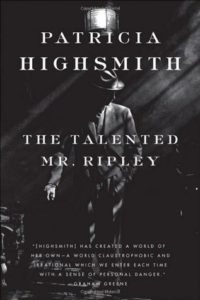
The Talented Mr. Ripley, Patricia Highsmith (1955)
Tom Ripley is the quintessential sympathetic scoundrel. To avoid police detectives in New York, Ripley eagerly accepts a wealthy businessman’s invitation to visit Italy to check in on his son, Dickie Greenleaf. The two young men are opposites and from the start don’t get along. Ripley is clever and intelligent, yet lacks a college degree, and he feels superior to most of the people around him. Dickie is educated, wealthy, and self-absorbed, having gone to Italy to paint, but he has negligible talent. During an outing on San Remo bay, Ripley impulsively strikes Dickie with an oar, killing him. The novel’s course suddenly shifts.
Ripley vaguely regrets the murder, suffers bouts of paranoia and some bad dreams, but he is able to convince himself that it was not his fault. He re-imagines the incident, draws alternate conclusions, and makes up different versions of what happened. And slowly, he begins to inhabit Dickie’s life, signing Dickie’s name on checks, selling Dickie’s boat, and soon Ripley begins to enjoy being Dickie. He takes on Dickie’s mannerisms, his tastes, and soon he is no longer impersonating Dickie—he is Dickie. He leaves behind his own shabby existence and steps into the life of the man he killed.
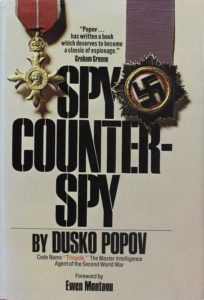
Spy/counterspy: The Autobiography of Dusko Popov, Dusko Popov (1974)
Dusko Popov’s autobiography presents a spy’s adventures during World War II, operating as an MI6 double agent against the Nazi’s and concurrently working for the FBI against Germany. Popov was not a fictional character. But his real-life wartime exploits were a role model for Ian Fleming’s James Bond. Popov and Fleming met in 1941 in Lisbon’s Estoril’s Casino, which would become an inspiration for Fleming’s novel, Casino Royal. Popov’s biographer, Larry Loftis, called Popov “Britain’s greatest World War II double agent and perhaps history’s best spy.”
Popov, a well-to-do Serbian, was recruited by Abwehr, German military intelligence to spy on England, and when he arrived in London in 1937, he presented himself to MI6, British military intelligence, offering his services. Popov was a British double agent codenamed TRICYCLE ostensibly operating as a German spy (codenamed SKOOT), all the while continuing to parade as a Yugoslav businessman preoccupied with the fate of his family. He was a flamboyant character who gambled and developed a playboy’s reputation, dating glamorous women in London, Lisbon, Berlin, and Washington. Loftis, commenting on Popov’s life and times, said that Popov belonged to an earlier world of intrigue, when “espionage, like rugby, was a ruffian’s game, played by gentlemen.” Popov’s life is an example of how a single spy can weave a web of deceit to create for himself a glamorous and dangerous imposter’s life that rivals the excitement of a fictional spy.
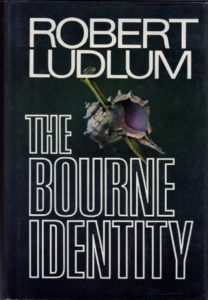
The Bourne Identity, Robert Ludlum (1980)
The Bourne Identity is a spy fiction thriller that turns the imposter trope upside down. It is the story of a man cast into the ocean when his boat explodes, causing total memory loss, who must then recover his identity. In the process, he encounters shady pursuers, a professional assassin, and the CIA, who want him dead. He thinks he’s succeeded finding his name when he follows a clue to Zurich and a bank clerk recognizes him as Jason Bourne. With that erroneous identification, he unwittingly becomes Jason Bourne’s imposter.
The story takes readers on a twisted and dangerous journey into a world of deceptions and conspiracies, offering a psychological portrait of a man who is uncomfortable believing that he is capable of the horrendous crimes committed by Bourne. He seeks to piece together the dangerous puzzle of his missing past. At the novel’s end, he proves that he is not the real Jason Bourne, but the only clue to his real identity is a first name—David. The novel ends as it began, with the protagonist living in a dissociative fugue state not knowing who he is.
(Featured image: Dusko Popov, origin unknown)
*
